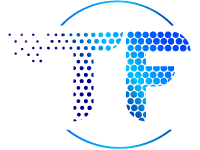From New Year’s resolutions to gym memberships to self-help books, we live in a culture that whole-heartedly believes in self-improvement. We also live in a culture that loves using quantifiable data to figure out how to do things more efficiently and effectively. Perhaps that’s why quantified self websites and apps have become so popular in the world of social media.
What Quantified Self Is All About
Quantified self refers to any application or tool that allows people to track information about themselves in order to quantify some area of their life. For example, a running enthusiast might use the popular website MapMyRun to keep track of where, how far, and how many hours they ran over the course of a month while someone concerned with their budget might use Mint to track what they’ve been spending their money on. It isn’t a form of social media that many businesses have thoroughly tapped into yet, but it’s becoming an increasingly important way to engage with customers and gather data that can help improve marketing.
How Can Businesses Benefit from Quantified Self?
While quantified self has the most obvious applications in the fitness and health industries, there are plenty of other businesses that can use quantified self tools in their marketing efforts. One great advantage of quantified self is that it provides consumer insight that businesses can use to improve their products, services, and marketing. For example, when people check in to a store or restaurant on Foursquare, they’re providing insight into the types of places they like to spend their time and money. When they use a fitness app, they’re sharing more about the activities they enjoy (including what products and events may appeal to them) and when they use a money-tracking app, they’re creating a clear picture of their spending habits.
Another way that businesses can use quantified self tools is by creating self-tracking apps that become a part of people’s everyday lives. For example, in addition to their personal online banking app, Chase now offers an app called Jot for Ink, which allows users to track and manage their business expenses from their phone. Every time someone uses this handy application, they think of Chase, which increases brand loyalty. By producing quantified self apps, businesses are doing more than just marketing—they’re becoming an essential part of their customer’s lives.
Examples of Quantified Self Apps
Nike+. One of the most well-known examples of quantified self, Nike+ produces a wide range of products such as a sports watch, armband, and Kinect training device that allow users to measure how active they are. One of their most popular products is the Nike+ Running app, which uses GPS to track distance, pace, time, and calories burned. It also allows people to make their runs social by posting the start of their run on Facebook and hearing real-time cheers every time someone likes or comments on their post. Users can share as much or as little of their run data on Facebook, Twitter, or Path as they want when they finish.
MapMyFitness is a free-to-use social platform that allows their 160+ million users to track their workouts—whether that’s running, biking, or walking—and share their data with their friends. Users can map their routes ahead of time or after the fact, upload activity from third-party devices like Garmin watches or enter activities manually, and get encouragement from (or strike up a competition with) friends. The site also has a nutrition log where you can record the food you eat to find things like the calories, carbs, fat, and protein you consume.
Sleep Cycle. Although there’s been some debate about how effective the app really is, plenty of users swear by Sleep Cycle, which is designed to wake people up during their lightest stage of sleep so that they don’t feel groggy. Users open the app on their iPhone before they go to bed, and Sleep Cycle uses the phone’s accelerometer to track nightly movements and determine “Sleep Quality” (the less movement, the higher-quality sleep, according to Sleep Cycle’s website). The app also lets users make notes about behavior that may affect their sleep behavior, such as “drank a soda with dinner.”
Foursquare is a free app that allows users to “check in” at different brick-and-mortar locations via social media. In addition to allowing users to connect with friends who also use Foursquare, the app will provide personalized recommendations and deals based on the places an individual, their friends, and people will similar tastes have checked in. As of January 2014, the company has reported that over 45 million people and 1.6 million businesses use their platform.
Mint. While there are plenty of finance management apps on the market, Mint is one of the most popular. Unlike online banking apps, Mint doesn’t allow you to move your money, but it does use your account information to track your spending habits and organize them into categories—like groceries, fast food, and gas—so that you can see where your money’s going. It also allows users to set a budget (broken down into different spending categories) and to easily see via bar graphs whether they’re over or under their budget in each category.
Evernote creates software products that let people record text notes, files, images, and web pages on their mobile devices. It’s primarily an organizational tool, but it can also be valuable for managing social media because it allows you to send photos, notes, and other media directly to Twitter, LinkedIn, or Facebook. You can also link it up with HootSuite, a popular tool for managing social media updates across platforms.


Never heard about Quantified Self.. Thanks for sharing such useful information
Thanks for sharing Joseph!